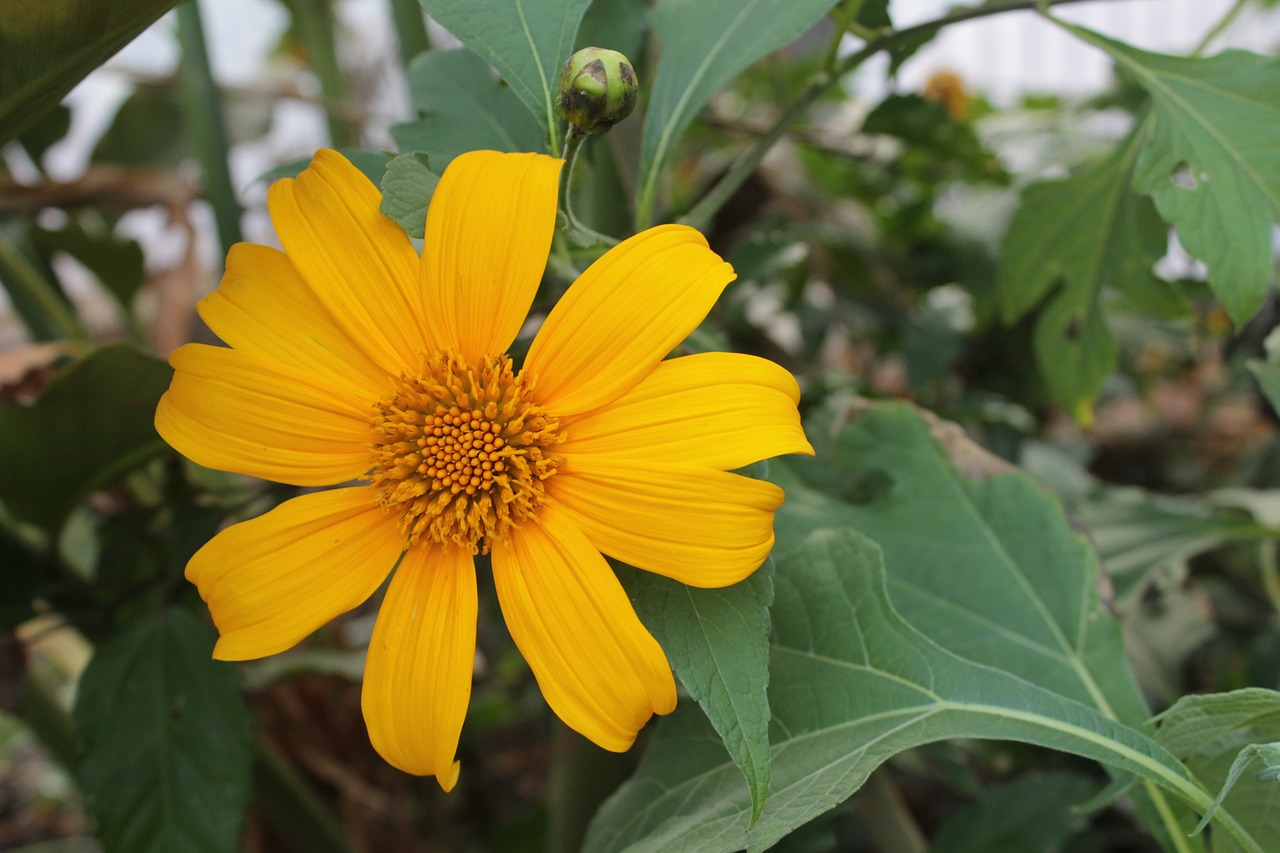
Tithonia
Tithonia rotundifolia
Basic Information
🌿 Family: Asteraceae🗺️ Zone: 8-11
Other Names:
- Mexican Sunflower
- Bolivian Sunflower
🌡️ Ideal Temperature : 65°F – 90°F
🔥 Heat Tolerance: Up to 100°F
❄️ Cold Tolerance: Down to 50°F
🌱 Type: Perennial
Layers
- Herbaceous
- Shrub
Functions
- Pollinator
- Wildlife Attractor
- Mulcher
- Dynamic Accumulator
- Border Plant
Pests
Description
Tithonia, commonly known as Mexican Sunflower, is a fast-growing, heat-tolerant flowering plant that produces vibrant orange-red blooms. It reaches heights of 1.5–3 meters (5–10 feet) and spreads widely, making it an excellent choice for borders and hedgerows. The plant thrives in full sun and well-drained soil, showing remarkable drought resistance.
The large flowers attract pollinators such as butterflies, bees, and hummingbirds, making it a valuable plant for biodiversity. It is also an excellent biomass producer, contributing rich organic matter when used as a green mulch or compost.
🌞💧 Sun and Water Requirements:
- Prefers full sun (6+ hours of direct sunlight).
- Well-drained, moderately fertile soil is ideal.
- Drought-tolerant but benefits from occasional deep watering in dry conditions.
✂️🫘 Methods to Propagate:
- Seeds: Direct sow after the last frost or start indoors and transplant.
- Cuttings: Can be propagated from semi-hardwood cuttings.
🧑🌾👩🌾 When to Harvest:
- Blooms continuously in warm seasons.
- Cut flowers for arrangements or seed collection when mature.
Purpose
Tithonia serves multiple roles in permaculture systems:
- Pollinator: Attracts butterflies, bees, and hummingbirds.
- Wildlife Attractor: Provides nectar and habitat for beneficial insects.
- Mulcher: Produces abundant biomass for green manure and composting.
- Dynamic Accumulator: Absorbs nutrients and enriches the soil.
- Border Plant: Used as a natural hedge to define garden spaces.